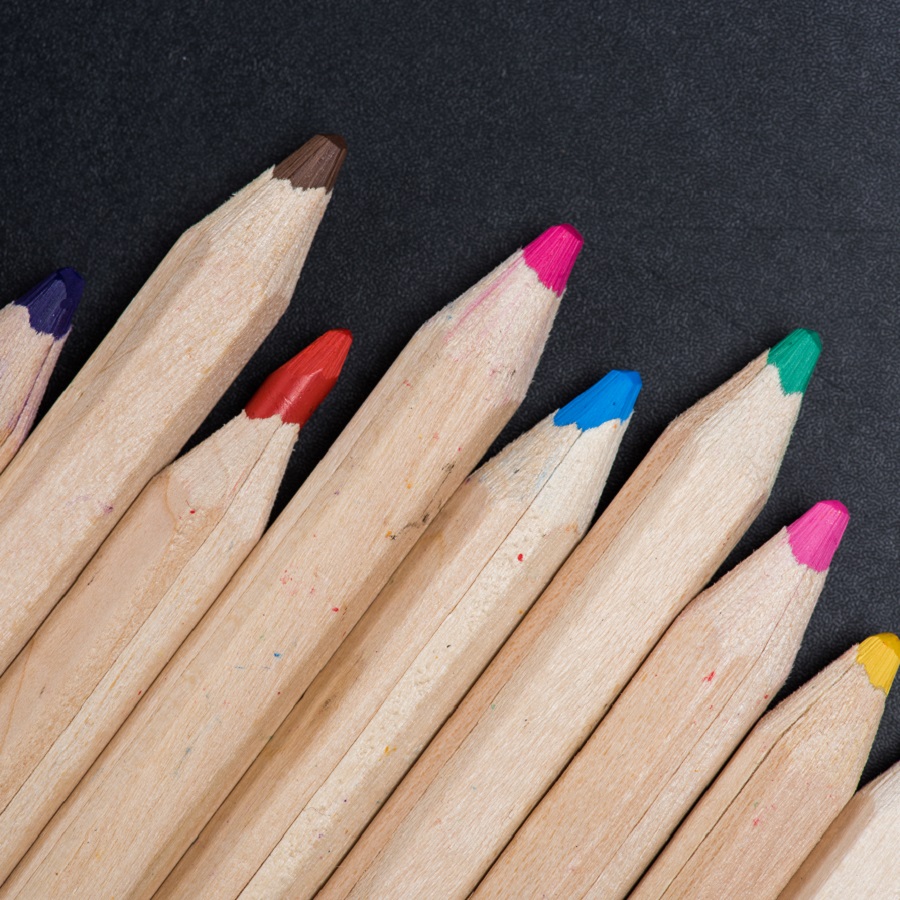In today’s creative world, finding high-quality colour pencils can be a challenging task. Despite the abundance of options available in the market, many consumers often find themselves dissatisfied with the quality of the products they purchase. This challenge is particularly pressing for artists, educators, and hobbyists who rely on colour pencils for their work. So why is it so difficult to find quality colour pencils? Let’s take a closer look at the intricacies involved in their production and learn about the efforts made by manufacturers to tackle this issue. For those seeking custom pencil options, cpencils.com offers a range of solutions that cater to both bulk orders and smaller, more personalized requests.

The Complexity of Production
The journey of a colour pencil from raw materials to a finished product is more complex than it might seem. The process begins with the selection of high-quality wood, which needs to be both durable and easy to sharpen. Commonly used woods include cedar and basswood due to their desirable properties.

Next comes the creation of the pencil’s core. This step involves mixing pigments with a binder to create a vibrant and durable core. The quality of pigments and binders used can greatly affect the final product, impacting both the intensity of the colours and the smoothness of the application. For example, higher-end colour pencils often use a wax or oil-based binder, which provides a smoother and more consistent laydown of colour.
The core is then encased in the wooden shaft, a process that requires precision to ensure the core is centered and securely bonded. The pencils are then coated, often with multiple layers of lacquer, to protect the wood and add a polished finish. Finally, they are cut to size, sharpened, and packaged for distribution.
Technological and Innovation Challenges
Producing high-quality colour pencils involves overcoming several technological challenges. One such challenge is achieving a consistent and vibrant colour across all pencils in a set. This requires precise control over the mixing process and the use of high-quality pigments.
Another challenge is the durability of the pencil core. Colour pencils need to be soft enough to deposit colour easily but hard enough to resist breaking under pressure. Manufacturers invest in research and development to find the perfect balance between these two qualities. For example, some companies have developed proprietary formulas for their cores that enhance both durability and colour laydown.
In addition to these technical challenges, manufacturers are also exploring innovative solutions to improve their products. For instance, some factories are adopting eco-friendly practices by using sustainable wood sources and non-toxic pigments. These innovations not only improve the quality of the pencils but also appeal to environmentally conscious consumers. For further insights into colour pencil manufacturing innovations, you can visit this article.
Market Demands and Quality Control
The demand for high-quality colour pencils is ever-growing, driven by both professional artists and hobbyists. However, meeting this demand requires stringent quality control measures. Factories must ensure that each pencil meets specific standards for colour consistency, core durability, and overall craftsmanship.
Quality control begins with the selection of raw materials. Factories need to source high-quality wood and pigments to ensure the best possible end product. During production, each batch of pencils undergoes rigorous testing to check for any defects or inconsistencies. This includes testing the cores for breakage resistance, checking the colour for consistency, and inspecting the lacquer coating for imperfections.
Moreover, some manufacturers offer customization options to meet specific customer needs. Companies like durzerd.com provide bulk custom pencil solutions, ensuring that businesses and organizations can get pencils tailored to their specifications. Similarly, cpencils.com caters to smaller, more personalized orders, making it easy for individuals to get exactly what they need.
By maintaining high standards and offering customization options, manufacturers can better meet the diverse needs of their customers. For additional information on quality control in the pencil industry, you can read this detailed guide.
Looking Ahead: The Future of Colour Pencil Manufacturing
As we look to the future, the colour pencil industry is poised for further advancements. Manufacturers are continually striving to improve the quality of their products through better materials, innovative production techniques, and enhanced quality control measures. Additionally, the growing awareness of environmental issues is likely to drive more factories to adopt sustainable practices, such as using recycled materials and minimizing waste.
The future also holds potential for greater customization, allowing customers to create bespoke colour pencil sets that perfectly match their needs. This trend is already being seen with companies like durzerd.com and cpencils.com, which offer tailored solutions for both large and small orders.
In conclusion, while finding high-quality colour pencils can be challenging, understanding the complexities of their production and the efforts being made by manufacturers can help consumers make more informed choices. By seeking out reputable brands and considering customization options, individuals can find the perfect colour pencils to meet their creative needs.



